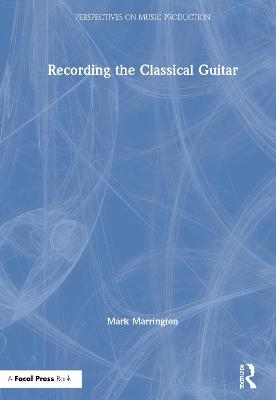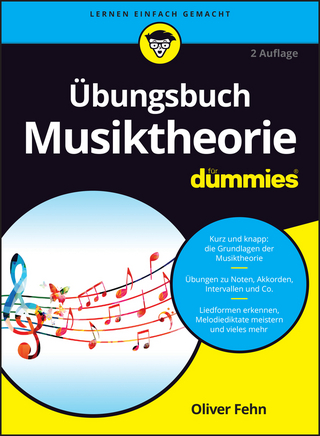
Recording the Classical Guitar
Routledge (Verlag)
978-1-138-55468-9 (ISBN)
Recording the Classical Guitar charts the evolution of classical guitar recording practice from the early twentieth century to the present day, encompassing the careers of many of the instrument’s most influential practitioners from acoustic era to the advent of the CD. A key focus is on the ways in which guitarists’ recorded repertoire programmes have shaped the identity of the instrument, particularly where national allegiances and musical aesthetics are concerned. The book also considers the ways in which changing approaches to recording practice have conditioned guitarists’ conceptions of the instrument’s ideal representation in recorded form and situates these in relation to the development of classical music recording aesthetics more generally. An important addition to the growing body of literature in the field of phonomusicology, the book will be of interest to guitarists and producers as well as students of record production and historians of classical music recording.
Mark Marrington studied classical guitar as an undergraduate before training as a musicologist in the late 1990s and undertaking doctoral work focused on twentieth-century British music and the composer Denis ApIvor. Later he became interested in record production and recording technologies leading him to a period of research into the impact of digital production tools (principally the Digital Audio Workstation) upon musical creativity in a number of genre contexts. This book is essentially a marriage of these two perspectives. Mark is currently Senior Lecturer in Music Production at York St. John University and his academic writing has been published by Cambridge University Press, Bloomsbury Academic, Routledge, Future Technology Press, British Music, Soundboard, Classical Guitar, the Musical Times and the Journal on the Art of Record Production.
Preface and Acknowledgements
1 Recordings and the Evolving Identity of the Classical
Guitar in the Twentieth Century
De!ning the Terms of the Study
Narratives of the Classical Guitar in the Twentieth Century
The Recording Model Established
The Recording Model Consolidated
The Recording Model Interrogated
The Recording Model Deconstructed
PART ONE THE RECORDING MODEL ESTABLISHED
2 The Classical Guitar in the Early Period of Recording: Spain
Introduction: Evaluating the Early Period of Classical Guitar Recording
The Technological Conditions of Early Recording
Recording Plucked String Instruments
Early Classical Guitar Recording in Spain, 1897–1936
The Recordings of Miguel Llobet
Spanish Guitarists on the Regal Label
Other Signi!cant Recordings Made by Spanish Guitarists During the 1920s and 1930s
3 Segovia at HMV (1923–1939)
Introduction
Segovia’s First Recording
Segovia at HMV: Repertoire and Recording Strategy
The Reception of Segovia’s HMV Recordings
The Sound of Segovia’s HMV Recordings: Early Classical Guitar Recording Aesthetics
The HMV Recordings and Later Critical Perspectives on Segovia’s Performance Style
4 The Classical Guitar in the Early Period of Recording: Latin America
Introduction
Edison, Victor and the Classical Guitar in Cuba and Mexico
Mexican and Cuban Guitarists Recording in the Late 1920s and Early 1930s
Classical Guitar Recording in the Rio de la Plata and the Legacy of Agustín Barrios
The Eclectic Roots of Solo Guitar Recording in Brazil
PART TWO THE RECORDING MODEL CONSOLIDATED
5 Segovia at American Decca
Introduction
Early Post-war Recordings and the Transition to LP
Return to Abbey Road
Segovia at American Decca: Rede!ning the Classical Guitar in the Post-war Period
The LP and the Structure of Segovia’s Early Recorded Programs
Repertoire Programming and Evolution of the Segovian Album Concept
Segovia in the Studio
Segovia’s Recordings and the Aesthetics of “High Fidelity”
Acoustics in Classical Guitar Performance: A Brief Digression
The Sound of Segovia’s American Decca Recordings
6 The North American Backdrop to Segovia
Introduction
The Foundations of the North American Classical Guitar
Marketplace
The Recordings of the Spanish Music Center
The Spanish Music Center and Lo-Fi Recording Aesthetics
The Recording Career of Rey de la Torre
Laurindo Almeida’s Recordings of the 1950s and 1960s
The Sound of Almeida’s Recordings
The Classical Guitar and American Popular Music and Jazz
7 Developments in Latin America
Introduction
The Documentation of Latin American Guitar Music
The Emergence of the Brazilian Classical Guitar
Guitarists of the Rio de la Plata
Alirio Díaz and Venezuelan Music
The Classical Guitar in Mexico
Cuban Perspectives on the Classical Guitar
PART THREE THE RECORDING MODEL INTERROGATED
8 Nationalism and Modernism in the Recordings of Julian Bream
Introduction
Early Recordings for Decca and Westminster
Recording Aesthetics: Westminster’s “Natural Balance”
Re-thinking the Classical Guitar Album Program: Bream at RCA
Modernizing the Repertoire: 20th Century Guitar, ’70s and Dedication
Bream’s Quest for an Acoustic Aesthetic
Re-orienting Recorded Guitar Perspective After Bream
Bream and the Recording Process
9 Non-conformity in the Recordings of John Williams
Introduction
Early Recordings: Delysé, Westminster and CBS
Williams’ Early Recording Aesthetic
Recording and Repertoire Experiments After 1970
Constructing the Solo Guitar Recording
Crossover Projects from Changes to Sky
Williams’ Changing Attitude to Recorded Classical Guitar Sound
Multi-tracking the Classical Guitar
10 The Wider European Context
Introduction
Spain: The Early Recordings of Narciso Yepes
Yepes at Deutsche Grammophon
Spanish Contemporaries of Yepes
Guitarists in Austria
The Recordings of Siegfried Behrend and Anton Stingl
The Emerging Czechoslovakian Guitar Scene
Classical Guitar Recording in France
PART FOUR THE RECORDING MODEL DECONSTRUCTED
11 Post-Segovian Narratives of the Classical Guitar
Introduction
The Classical Guitar and the Recording Industry at the End of the 1960s
The Assimilation of the Bream Paradigm
Leo Brouwer and the Avant-garde Classical Guitar
The Album Program Re-imagined
The Rise of the North American Progressives
Contemporary Eastern European Perspectives
Traversing Boundaries: The Recordings of Liona Boyd
Popular Music as Repertoire: The Classical Guitar Canon In!ltrated
12 Retaining and Revitalizing the Tradition
Introduction
Segovia’s Legacy in North America: Christopher Parkening
The Spanish Perspective Retained
Recordings and the Classical Guitar Transcription
Historical Composer Recording Projects
Latin America and the Classical Guitar Canon
Audiophile Recording and the Classical Guitar
Recapturing Liveness: Classical Guitarists and “Direct to Disc” Recording
13 Narrative Threads Since the 1990s
Introduction
The Consolidation of the Progressive Paradigm
The Revival of the Classical Guitarist-Composer
Classical Guitar Recording in Britain Since the 1990s
North American Perspectives After 1990
Popular Music and the Canonization of The Beatles
The Canon Upheld: The Recordings of David Russell
The Segovian Paradigm Reinstated
The Repertoire Documented: The Naxos Guitar Collection
The Emergence of the Specialist Classical Guitar Recordist
New Critical Perspectives on Classical Guitar Sound
Extensions of the Audiophile Recording Aesthetic
14 Two Contemporary “House” Guitarists and the Future of Classical Guitar Recording Practice
Introduction
Xuefei Yang
Miloš Karadagli□□
Concluding Remarks
Archives and Bibliography
Select Discography
Index
| Erscheinungsdatum | 06.04.2021 |
|---|---|
| Reihe/Serie | Perspectives on Music Production |
| Zusatzinfo | 1 Tables, black and white |
| Verlagsort | London |
| Sprache | englisch |
| Maße | 178 x 254 mm |
| Gewicht | 938 g |
| Themenwelt | Kunst / Musik / Theater ► Musik |
| Mathematik / Informatik ► Informatik | |
| ISBN-10 | 1-138-55468-5 / 1138554685 |
| ISBN-13 | 978-1-138-55468-9 / 9781138554689 |
| Zustand | Neuware |
| Haben Sie eine Frage zum Produkt? |
aus dem Bereich


